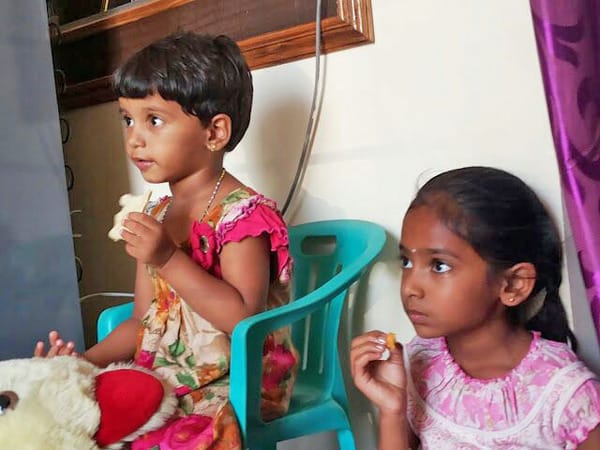
“My son doesn’t drink milk,” “My child doesn’t eat vegetables,” “My daughter won’t eat anything other than biscuits..” – sounds familiar? A common complaint that most parents have is that their child doesn’t eat (enough). There are even instances of parents requesting the pediatrician to prescribe some supplements or health tonics that will increase the child’s appetite.
Most of the times these are not required as parents just wrongly assume that their child isn’t eating enough – just because the portions children eat are too small. Keep in mind that they are kids and will not be able to eat as much as an adult.
Growth is one way of knowing whether a child is getting the right nutrition. To check the child’s growth, keep a copy of the growth chart. Most pediatricians record the height and weight of the child at every visit and plot the same on a growth chart. If the child is around or above the 50th percentile, then he/she is getting enough calories to grow. If at any point, the percentile keeps dropping below the 50th percentile in terms of weight and the height doesn’t seem to be increasing moderately over a period of time, then that may be a sign of under-nutrition. The question then arises is whether the child is getting the right amount of nutrition that is required for growth.
Sometimes, just getting sufficient calories for growth is not enough-the child may be eating and drinking the wrong foods (chips, chocolates, biscuits, aerated drinks and such) most of which provide nothing other than empty calories. Empty calories are basically foods that provide no other nutrients to the body other than calories. The calories are either from sugar or from fat.
To ensure that a child is getting adequate nutrition through his/her diet, here are some guidelines:
- Make sure that the child eats at least three meals (breakfast, lunch, dinner) and has 2-3 small snacks in between.
- Serve the meals and snacks at the dining table and not in front of the TV. Studies have shown that people who eat in front of the TV or other similar distractions like video games, computer not only end up eating more, but also find it difficult to remember what and how much they have eaten. Make it a point to eat meals together as a family and be a role model by not being picky or choosy about food.
- Ensure that the child gets to eat all the food groups:
Grains: Rice, wheat breads, pasta, roti/chapathi, or ragi/jowar.
Protein: Pulses/lentils (e.g dals, mung, rajma, soy, etc) eggs, chicken, fish.
Vegetables: Make sure the child eats a variety of seasonal veggies and also green leafy vegetables (palak, dantina soppu/amaranth, sabbasige, methi). Limit using only potatoes as a vegetable.
Fruits: Can be served at the end in lieu of dessert. Choose fresh seasonal fruits rather than canned fruits (which might be loaded with sugar).
Dairy: Curd, skimmed milk, low-fat cheese, paneer and soya milk are excellent sources of Calcium. These can be served separate or mixed with the meal like veggie+cheese sandwich, curd rice or paneer burji. - Serve water instead of juice with the meals. Most kids don’t drink enough water but that doesn’t mean that you should give them juice instead.
- Healthy snacks can also contribute to the child’s nutrition. Avoid foods like cookies, pastries, chips, chocolates. Instead serve fruits, cheese, fruits in yogurt, fruit smoothies, mini sandwiches (with cheese, peanut butter), dhoklas, mini-uttapams, wraps (with cheese/scrambled eggs, pulses) nuts and dry fruits, coin idlis, sukha bhel, popcorn(with less butter/oil), etc. Use your imagination and make the snacks more attractive when serving. A glass of skimmed milk/ soy milk or 100% fruit juice can also be served with the snacks.
- Make sure there is at least a gap of 2 hours between snack time and regular meal times otherwise the child may not be hungry.
Other than good nutrition, kids also need adequate exposure to sunlight to get their quota of vitamin D and also need some physical activity. Instead of letting them sit indoors glued to the TV or video games, keep the child engaged in some kind of physical activity (outdoor play, swimming, cycling, cricket, karate, etc) for at least an hour each day. This will keep the child active and also increase the appetite.